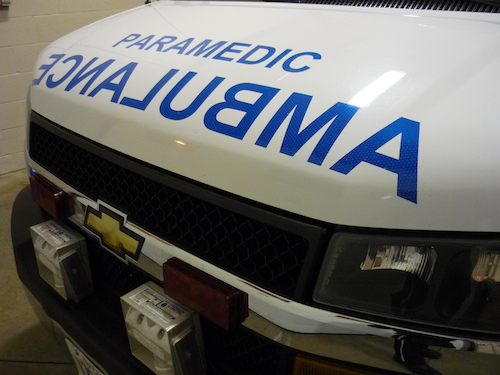In February of last year, Dr Ken Murray published a story in the Wall Street Journal story entitled, “Why Doctors Die Differently”. In this, he describes how doctors know the limits of medicine and know when it is time to stop treatment in order to have a good death. As a paramedic who continues to work during breaks in medical school, this concept of a good death is something that I have found to be interesting. I have come across very few “good deaths”, some terrible deaths, and many dreadful deaths, that could have potentially been good deaths.
Early one morning we responded to a home for a 72 year old female who was unconscious with a history of cancer. With just that information, I had a sinking feeling about how things were going to go. We entered the house and found Mrs Peterson lying supine on the floor in cardiac arrest. As we prepared our equipment and began resuscitation, we spoke with the husband about the history and the patient’s wishes. She had likely been down for 10 minutes with no CPR and had a history of breast cancer with metastasis “everywhere”. She had no written do not resuscitate order or advance health directive and Mr Peterson maintained that she would want a resuscitation attempt.
We began the resuscitation attempt, delivering high quality compressions and careful ventilations. The patient sprawled out on the floor in front of us appeared to be a skeleton of her previous self, cancer having ravaged her body. As I tilted her head back to deliver the ventilations and felt my hands against her bald head, I couldn’t help but silently hope that our efforts would be unsuccessful so that her ordeal would finally be over.
The defibrillator was quickly attached and to my dismay it showed ventricular fibrillation. We knew what the final outcome was going to be and this only meant a longer road to that same destination. The shock and a few more minutes of CPR she led to a return of spontaneous circulation. We transported her to hospital and Mrs Peterson died in the ICU the next day without ever having regained consciousness.
If Mrs Peterson had been asked about this situation when she was still in relatively good health, having time to consider the realities of resuscitation attempts, it is extremely unlikely she would have wanted this. This bothers me, not because a patient ultimately died but rather because we managed to get a pulse back. We achieved a return of spontaneous circulation, but we certainly did not save this patient.
This is just one case of something that happens routinely across Australia. Doctors die differently because they know better. If our patients are not as informed as us in their end of life decisions then this represents our failure to communicate with our patients. It is our failures that often lead to people like Mrs Peterson missing an opportunity for what could have been a good death.

